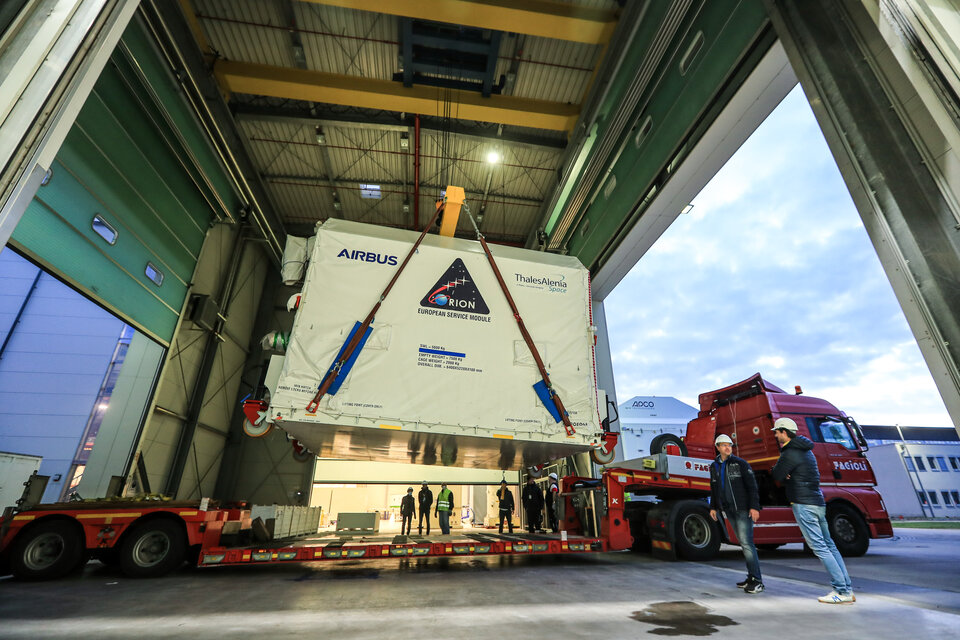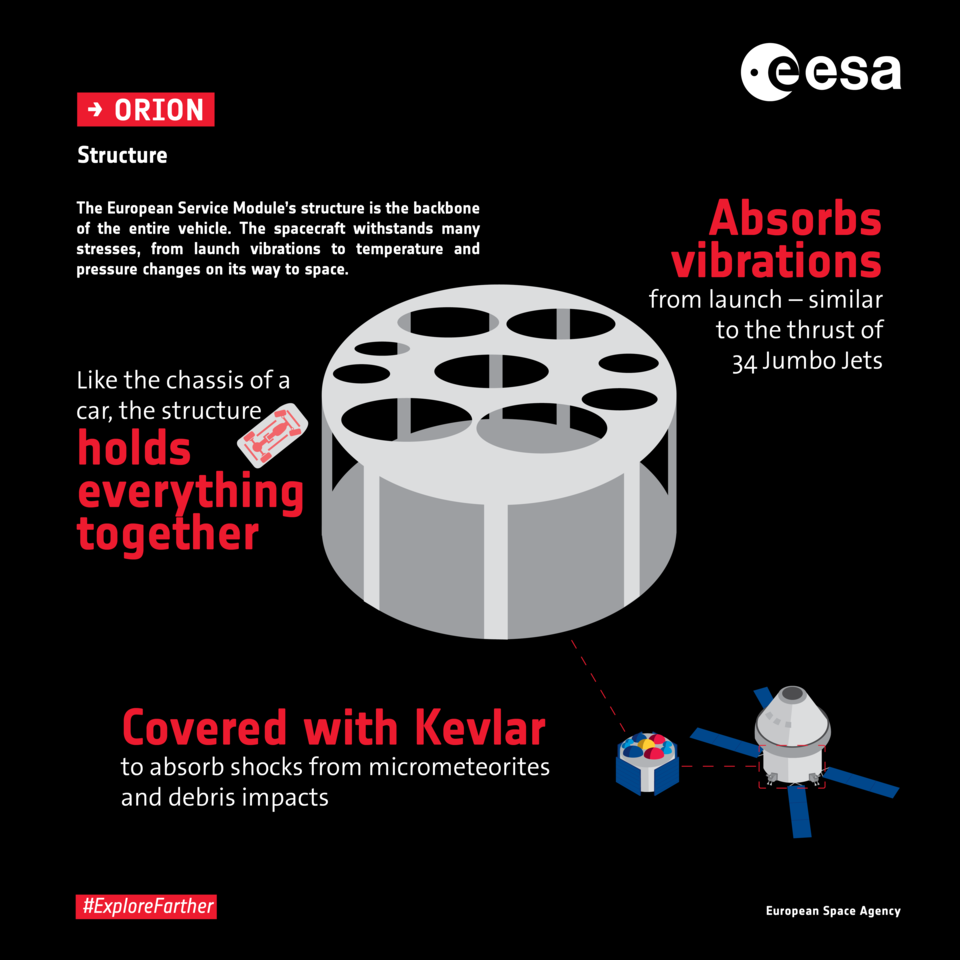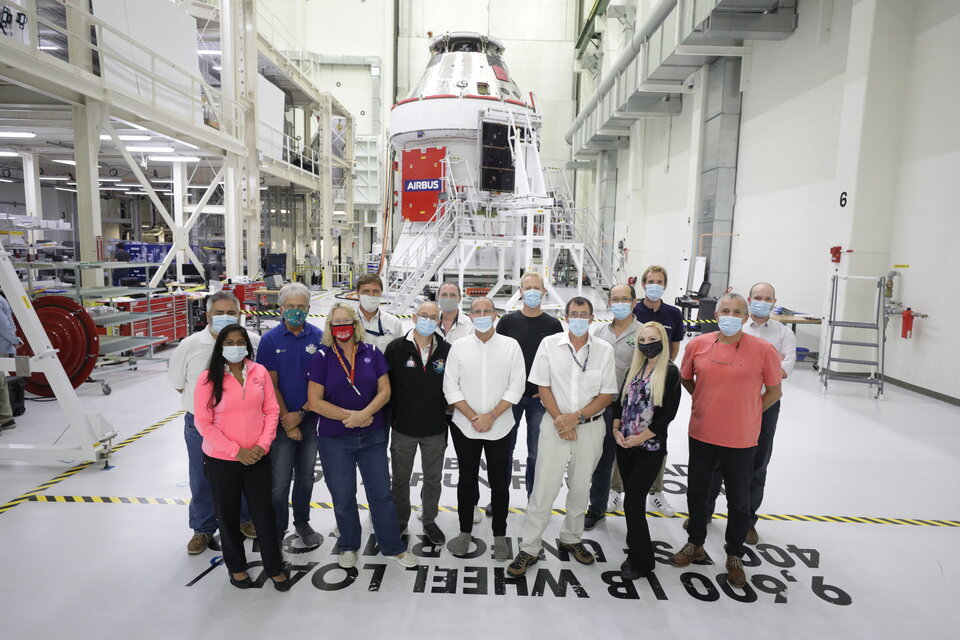15.10.2020

The structure that will fly the first woman and next man to land on the Moon and return on the Artemis III mission by 2024 arrived at the Airbus integration hall in Bremen, Germany, from its Thales Alenia Space manufacturing site in Turin, Italy.

The structure was transported in an oversized container that keeps the temperature and humidity levels constant, taking a week to travel the 1200 km trip.
The European Service Module will now have a myriad of components installed that will power and keep up to four astronauts alive on their trip to land on the Moon. Hardware from 11 countries is shipped to Airbus in Bremen for integration into the structure.

Like how a car chassis is built up, the structure is a shell for technicians to add the four 2000 l propellant tanks, 240 l water tanks, tanks for air, 33 engines, the pipes to connect them all as well as 11 km of wiring for electronics.
The third module structure will join the second European Service Module in the integration hall, it is already far advanced installing the electronics and solar drive array in the process of building it up to become the next-generation of human spacecraft.
Lighter, safer, better

Although carbon fibre and other space materials are part of all European Service Modules, the third edition is not a carbon copy of its two older siblings. The design has been tweaked to increase performance and safety.
The structure that arrived today is lighter than the previous ones, so the complete Orion spacecraft will have more launch opportunities with the same amount of fuel. This allows for more possible launch dates in a year, making it easier to launch an Artemis mission a year.
The 24 attitude control thrusters will be placed in a slightly different layout to increase manoeuvrability of the Orion spacecraft and allow it to carry other payloads such as elements of the lunar Gateway in future missions. The actuator that steers Orion’s main engine is getting an upgrade too after using Space Shuttle hardware for the first two European Service Modules. Last but not least, the valves in the propulsion system are being made more robust and fault-tolerant for even more crew safety.

The European Service Modules connect to the Crew Module Adaptor of Orion and are part of the Artemis programme to return humans to the Moon – providing air, water, heat and cooling as well as keeping the spacecraft on course for the astronauts inside.
Artemis II in 2023 will be the first flight test with a crew. In 2024, the first woman and next man will fly to surface of the Moon on the Artemis III mission relying on the hardware delivered now, and begin the establishment of sustainable exploration by the end of the decade.
All coming together

In the USA the first European Service Module was completed after two years of testing and integration. The first mission will be an uncrewed orbit around the Moon and is scheduled for launch next year.
“With two modules being built at the same time, and the first one practically complete, the European teams behind the hardware and integration are doing excellent work,” says ESA's European Service Module programme manager Philippe Deloo, “but there is little time for celebration as production ramps up.
“We are proud of the great achievements as we go step by step forward to the Moon!”
Quelle: ESA
